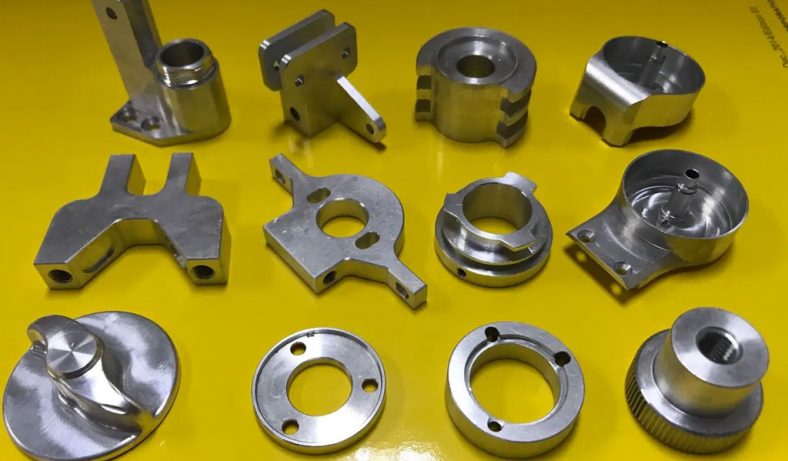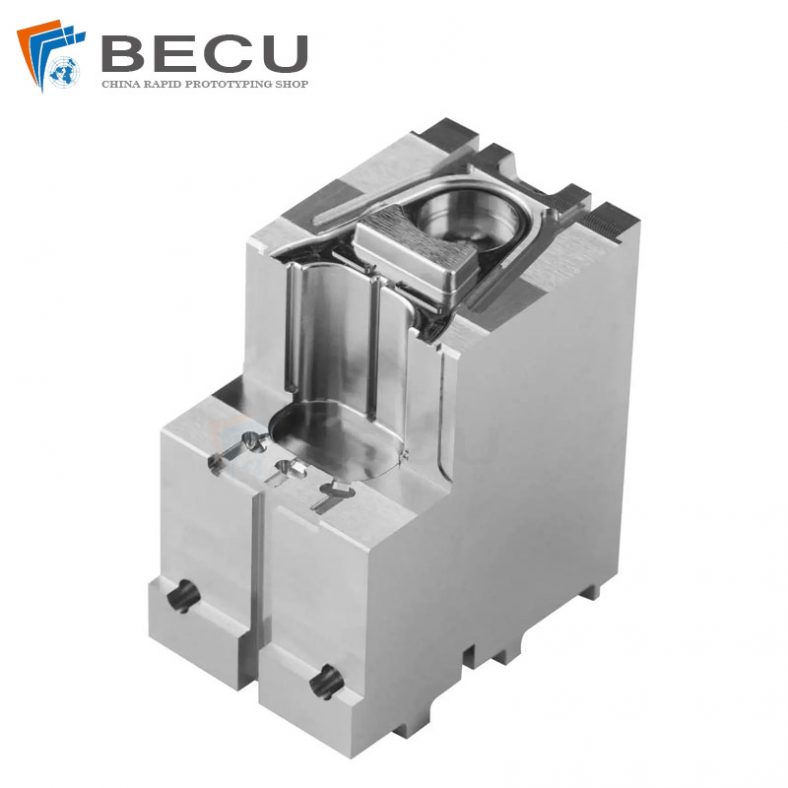
Computer Numerical Control (CNC) machining is a versatile and efficient manufacturing process used across various industries. The selection of materials is a crucial factor that directly impacts the CNC machining process’s outcome. Metals, in particular, are widely employed due to their mechanical properties, thermal conductivity, and ease of machinability. However, metals can be broadly classified into two groups: hard metals and soft metals, each with distinct characteristics and applications. This extensive article aims to provide a comprehensive analysis of hard metals and soft metals in CNC machining, covering their definitions, properties, advantages, challenges, machining considerations, and applications.
Armed with this knowledge, manufacturers can make informed decisions when choosing the right metal for their CNC machining projects.
What Is Hard Metals
Definition and Properties
Hard metals, also known as “hard alloys” or “hard metal carbides,” are a class of materials renowned for their exceptional hardness, wear resistance, and high strength. They primarily consist of metallic elements like tungsten, titanium, and cobalt, combined with carbon or other carbide-forming elements. The primary hard metal in use today is tungsten carbide, which is produced through a powder metallurgy process.
Applications in CNC Machining
Hard metals are particularly suited for CNC machining applications where extreme wear resistance and high cutting speeds are required. Key industries that extensively use hard metals include aerospace, automotive, oil and gas, mining, and cutting tool manufacturing.
Advantages
- Excellent wear resistance: Hard metals can withstand high temperatures and pressures without significant wear or deformation, making them ideal for high-speed machining and cutting applications.
- Enhanced tool life: CNC tools made from hard metals last longer due to their superior wear resistance, reducing downtime and maintenance costs.
- Increased productivity: The ability to operate at high cutting speeds translates to improved machining efficiency, increasing overall productivity.
Challenges
- Brittle behavior: Hard metals tend to be brittle, which may lead to chipping or cracking during machining operations if not handled properly.
- Cost: Hard metals are generally more expensive than soft metals, affecting the overall manufacturing cost.
Understanding Soft Metals
Definition and Properties
Soft metals, on the other hand, are malleable and ductile materials that exhibit low hardness and excellent formability. They typically comprise metals such as aluminum, copper, brass, and mild steel.
Applications in CNC Machining
Soft metals find extensive application in industries requiring intricate shapes, precise tolerances, and ease of forming. Common sectors that utilize soft metals include electronics, automotive, consumer goods, and architectural industries.
Advantages
- Machinability: Soft metals are easier to machine due to their lower hardness, making them more forgiving during CNC operations.
- Cost-effectiveness: Soft metals are generally more affordable than hard metals, contributing to cost savings in manufacturing processes.
- Versatility: Soft metals can be easily shaped and formed into complex designs, catering to various machining needs.
Challenges
- Lower wear resistance: Soft metals have inferior wear resistance compared to hard metals, limiting their applicability in high-speed and high-stress machining.
- Reduced tool life: The softer nature of these materials can cause faster tool wear and reduced tool life, necessitating more frequent tool replacements.
What Makes a Metal Hard or Soft?
The hardness or softness of a metal is determined by its mechanical properties, particularly its ability to resist deformation and indentation. These properties are influenced by the metal’s crystal structure, bonding types, and the presence of certain elements or impurities. Here are the primary factors that contribute to the hardness or softness of a metal:
Crystal Structure: Metals can have different crystal structures, which affect their mechanical properties. The two most common crystal structures in metals are:
- Body-Centered Cubic (BCC): Metals with a BCC crystal structure tend to be softer because the atoms have more room to move and slide past each other, making them more ductile and malleable. Examples include pure iron and alpha-iron (ferrite).
- Face-Centered Cubic (FCC): Metals with an FCC crystal structure are generally harder because the atoms are more tightly packed, leading to less mobility and greater resistance to deformation. Examples include aluminum, copper, and gold.
Bonding Type: The type of atomic bonding within the metal also influences its hardness. Metallic bonding involves the sharing of electrons among metal atoms, leading to a strong cohesive force. The delocalized electrons contribute to the plasticity of metals, making them ductile. The strength of metallic bonding contributes to the hardness of the metal.
Alloying Elements: The addition of certain elements to the base metal can significantly impact its hardness. For example, carbon is commonly added to iron to create steel, which is much harder than pure iron. The presence of alloying elements can affect the crystal structure, the formation of carbides, and the overall mechanical properties of the metal.
Heat Treatment: Heat treatment processes, such as quenching and tempering, can alter the hardness of metals. Quenching involves rapidly cooling the metal, leading to a hardened microstructure, while tempering reduces hardness and increases toughness by reheating the metal to a specific temperature and then cooling it.
Cold Working: Cold working, also known as cold deformation, involves shaping the metal at room temperature through processes like rolling, forging, or drawing. This process increases the dislocation density within the metal’s crystal lattice, making it harder and stronger.
Grain Size: The size of the grains in the metal’s microstructure also affects its hardness. Smaller grain size generally leads to greater hardness due to increased grain boundary strengthening and reduced dislocation movement.
Annealing: Annealing is a heat treatment process used to soften metals. It involves heating the metal to a specific temperature and then slowly cooling it, allowing the metal to recrystallize and reduce dislocation density, making it softer and more ductile.
The table below shows a side-by-side comparison of hardness vs shear modulus vs ultimate tensile strength for some commonly CNC machined metals.
| Metal | Hardness (HV) | Shear Modulus (GPa) | Ultimate Tensile Strength (MPa) |
|---|---|---|---|
| 17-4 PH Stainless Steel | 363-444 | 75-78 | 1100-1310 |
| Kovar | 180 | 73 | 560 |
| Grade 2 Titanium | 150-250 | 41 | 380 |
| Grade 5 Titanium | 334 | 41 | 950 |
| 2024 Aluminum | 120 | 28 | 310 |
| 6061-T6 Aluminum | 95 | 26 | 310 |
| 6063 Aluminum | 75 | 26 | 240 |
| 7075-T6 Aluminum | 150 | 26 | 570 |
| 360 Brass | 85 | 41 | 380 |
| 304 Stainless Steel | 200 | 72 | 550 |
| 316 Stainless Steel | 200 | 75 | 580 |
| Zinc | 30-70 | 43 | 120-300 |
The hardness or softness of a metal is influenced by its crystal structure, bonding type, alloying elements, heat treatment, cold working, grain size, and annealing. Understanding these factors is crucial for selecting the appropriate metal for specific applications, such as choosing hard metals for wear-resistant cutting tools and soft metals for formable and ductile components.
Selecting the Right Metal for CNC Machining
Material Selection Considerations
Choosing the appropriate metal for CNC machining involves several factors:
- Application requirements: Evaluate the specific needs of the final product, including mechanical properties, wear resistance, and environmental conditions.
- Machining complexity: Consider the intricacy of the design and the required precision during the machining process.
- Cost considerations: Analyze the overall budget and strike a balance between material cost and performance.
Common CNC Machining Processes for Hard and Soft Metals
- Turning: Suitable for both hard and soft metals, turning involves the rotation of the workpiece while a cutting tool shapes it into the desired form.
- Milling: This process is well-suited for soft metals as it involves removing material using rotating multi-point cutting tools.
- Drilling: Applicable to both hard and soft metals, drilling creates holes using specialized cutting tools.
Advanced Techniques and Tooling for CNC Machining
Cutting Tools
- For hard metals: To minimize the challenges posed by the brittle nature of hard metals, use specialized carbide or diamond-coated tools designed for high-speed machining and increased wear resistance.
- For soft metals: High-speed steel (HSS) or carbide tools are commonly used for soft metals, providing good balance between performance and cost.
Coolant and Lubrication
- Proper coolant and lubrication strategies are crucial for both hard and soft metals to maintain tool life and enhance surface finish.
- For hard metals, high-temperature lubricants are often used to withstand the extreme conditions of high-speed machining.
Advanced CNC Machining Techniques
- Trochoidal milling: This technique involves using circular tool paths to reduce tool wear and vibration during machining, suitable for both hard and soft metals.
- Peel milling: Ideal for soft metals, this method minimizes radial forces, resulting in improved surface finishes.
In conclusion, selecting the right metal for CNC machining is a critical decision that directly impacts the quality, efficiency, and cost-effectiveness of the manufacturing process. Hard metals offer excellent wear resistance and high-speed capabilities, making them suitable for demanding applications, while soft metals excel in their machinability and formability, catering to intricate designs. Manufacturers must carefully assess the specific requirements of each project to determine the most appropriate material for their CNC machining needs. By understanding the characteristics and advantages of both hard and soft metals, manufacturers can optimize their CNC machining processes and achieve exceptional results across a wide range of industries.
Sourcing Simplified – Start Your Next Project With Be-Cu
Whether you’re using brass, tool steel, or any number of other metals for your next project, Be-Cu China cnc machining factory has you covered. We are your operating system for custom manufacturing that makes CNC machined part procurement faster, easier, and more efficient. In other words, Be-Cu lets engineers, like you, engineer.
-

CNC Machining Bakelite Circuit Board Test Fixture
-

Precision Grinding Tungsten Steel Mold Parts
-

5 Axis CNC Machining Medical Olecranon Plate
-

Special-Shaped Non-Standard Medical Device Needles
-

High-Speed Steel (HSS) Die Punching Needles
-

Precision Tungsten Copper Alloy Eccentric Insert
-

5 Axis CNC Machining Spiral Bevel Gear Mold
-

Small Precision Injection Molding Inserts
